Japanese Anemones: How to Grow and Care For These Fall-blooming Flowers
Finding flowers to add some color to your yard at the end of the gardening season can be tricky. Learn how to grow Japanese Anemones that will provide beautiful blooms to your garden in the fall.
I love finding shade plants that bloom in the fall since my very shady garden always seems to need a little pick me up at that time of the year.
Japanese Anemones
This post may contain affiliate links. We make a small commission if you buy the products from these links (at no extra cost to you). As an Amazon Associate, I earn from qualifying purchases. But we only recommend products we would use ourselves. For more information, click here to see our disclosures.
One of the most under utilized fabulous fall bloomers for your garden is the Japanese anemone, also called anemone x hybrida or windflower.
Because it blooms in late summer through the fall, this plant makes an exciting change from the usual autumn chrysanthemums and asters.
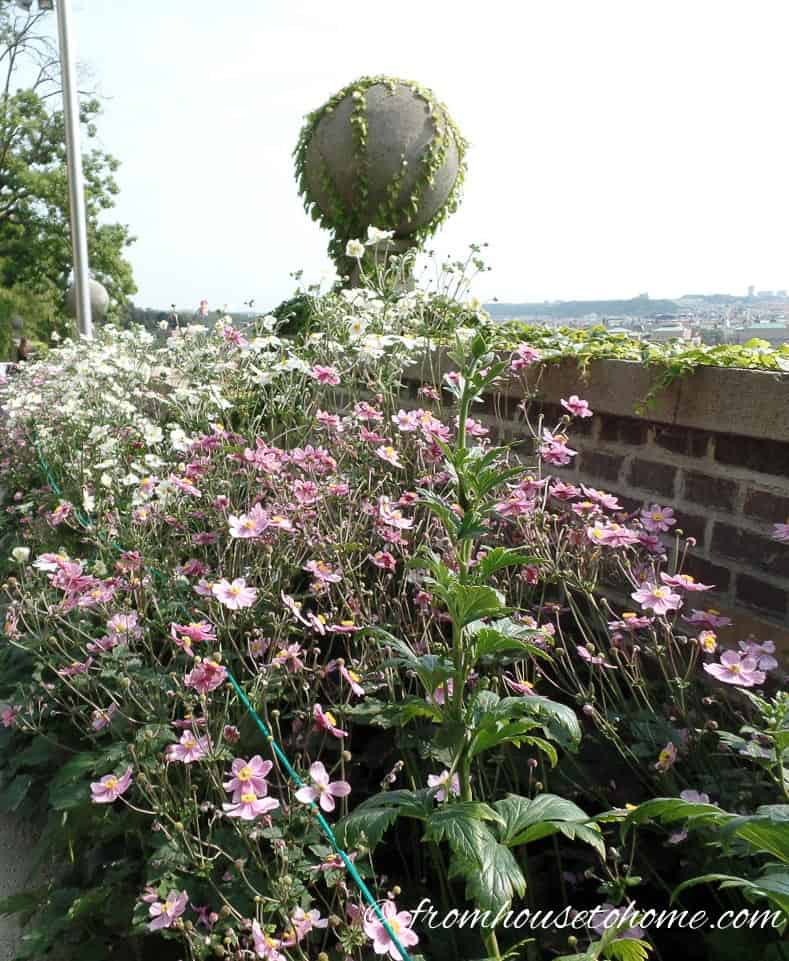
When I visited Prague Castle last September, there was a beautiful pathway accented by a border of white and pink Japanese anemone flowers planted in monochromatic alternating 8 foot sections all in full bloom nodding delicately in the breeze — simply breathtaking and charming in its simplicity.
Which Anemones Are These?
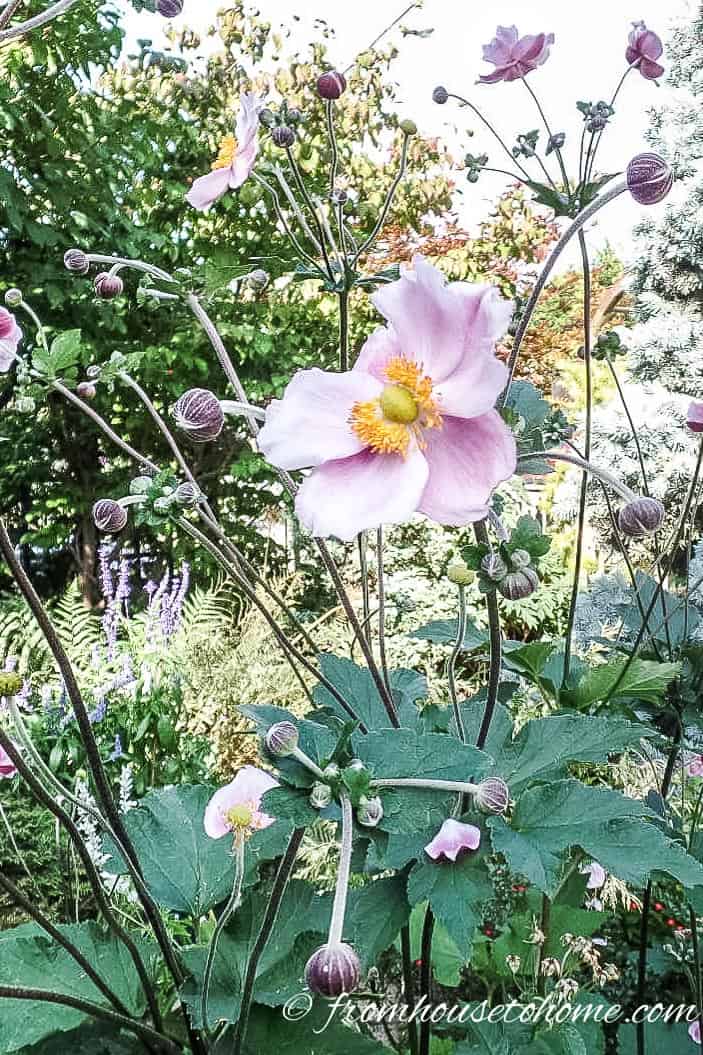
Although there are over one hundred species of perennial anemones in the genus, some of which are ground hugging and bloom in the spring, in my garden I have had the most success with the taller, fall bloomers that have fibrous roots. These are the anemone I am writing about here. They are a hybrid cross between the Japanese Anemone hupchensis and the Himalayan A. vitifolia.
The cultivars are characterized by star or cup shaped flowers in shades from white to mauve and dark pink. The flowers may be single, semi-double or double.
The dark green leaves have hairy undersides. The plants form a robust clump that reaches about 5 feet in height.
Japanese Anemone ”Honorine Jobert”*
With a few exceptions, like white Anemone hup. Honorine Jobert*, the individual cultivars are often not named when you see them in plant nurseries. Rather, they are all labelled “Japanese Anemone” or A. x hybrida. It is a good idea to buy these plants in bloom so that you can be sure to get the colors and flower shape you want.
As an extra bonus, Japanese Anemones attract butterflies and are salt, deer and rabbit resistant. It’s hard to resist a perennial plant with so much going for it!
You Might Also Like: Perennials and Shrubs That Bloom in the Fall
How and When To Plant Japanese Anemones
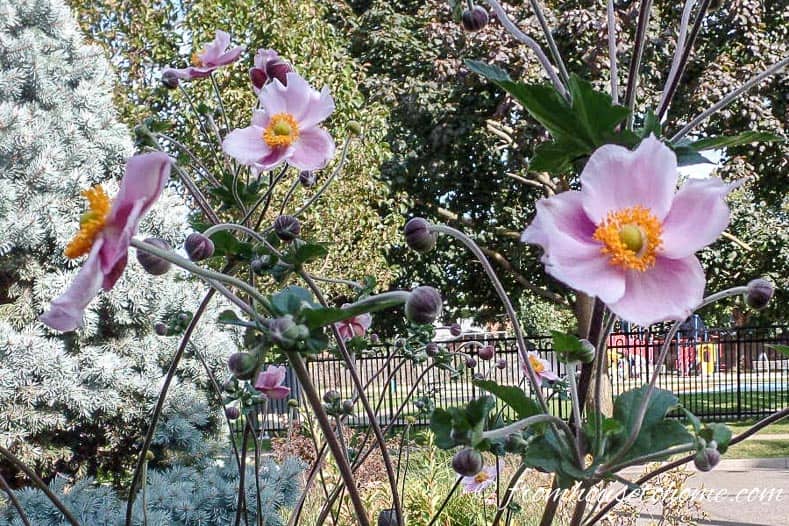
Zones: 4 – 7 (depending on the variety)
Sun: Part Shade To Sun
Size: Up to 5′ high and 4′ wide
Bloom Time: Fall
Japanese Anemones prefer to grow in part shade but will tolerate full sun. As with many plants, the further north you are in its growing range, the more sun they can take.
The amount of light also has an impact on how tall the Anemones grow. More shade generally produces taller plants (closer to 5′) where plants grown in more sun will be considerably shorter.
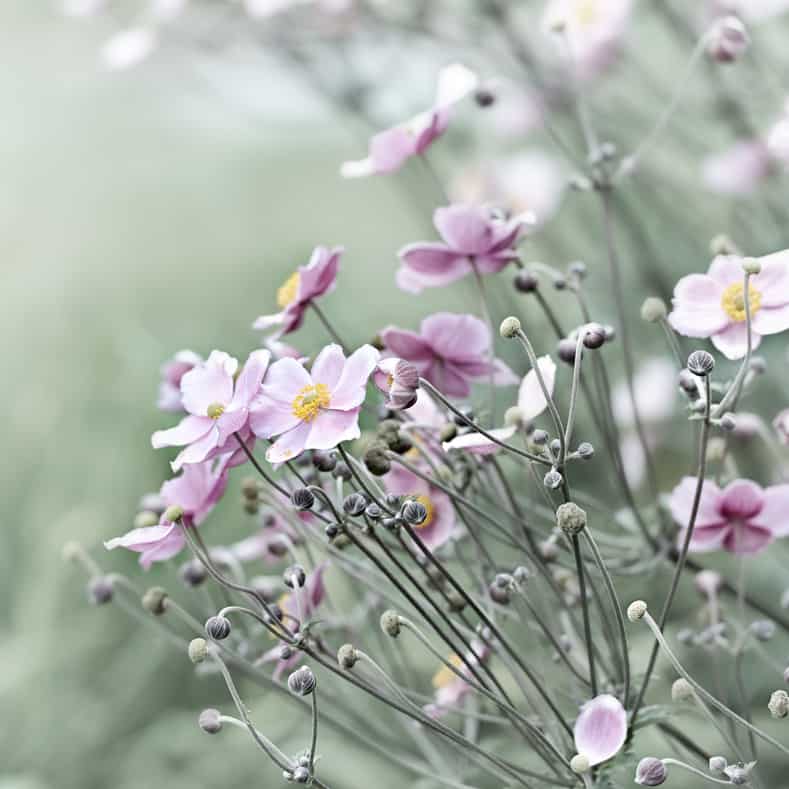
These perennials do tend to spread out every year via rhizomes and will eventually create a good-sized clump. You will need to chop off new shoots once they start getting big to keep them from taking over. Note: They spread much more slowly in the northern zones of their range, so if that’s where you live, you won’t have to worry about this much!
Planting Japanese Anemones in standard loamy garden soil that is not in a wet location will make sure they are happy. They do best if planted in the spring to give them time to settle in before their big fall show.
Pin It So You Don't Forget It!
 [/span6][span6]
[/span6][span6][/span6][/columns]
How To Care For Japanese Anemones
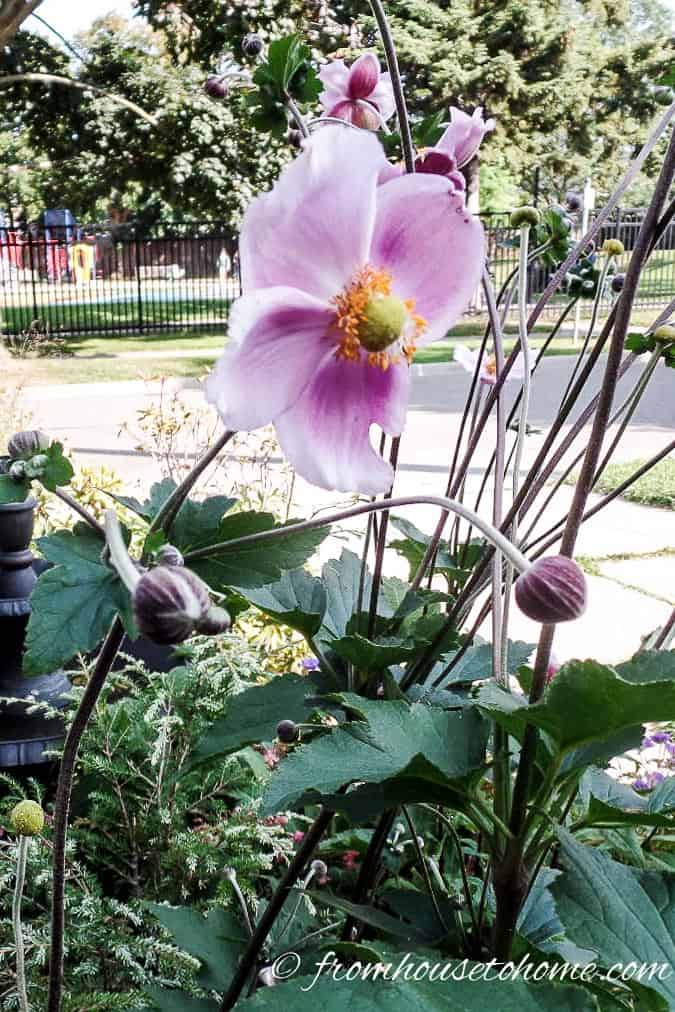
One of the best things about Japanese Anemone is that they are very low maintenance.
They like moist but well-drained soil, so make sure they are watered but not sitting in water. The more sun they get, the more moisture is required to keep them growing. In my garden, they are actually planted in fairly dry location and are doing quite well…so I think less is better than more when it comes to watering.
Other than the watering, I don’t do much with them. They do not even need to be dead-headed to keep blooming (although removing spent flowers does make the plants look a little neater).
If your plants are growing in the shade and have really tall stems, you may want to stake them loosely to prevent them from bending over in the wind.
Japanese Anemone Companion Plants

Because they are fall bloomers, the Japanese anemone are dormant in the spring. For this reason they are perfect companion plants for spring bulbs like tulips and daffodils. The bulbs can finish blooming and then the anemone foliage comes out to effectively hide the straggly bulb leaves.
I have my anemone planted beside the fern peonies, which bloom in early spring and go dormant in the summer.
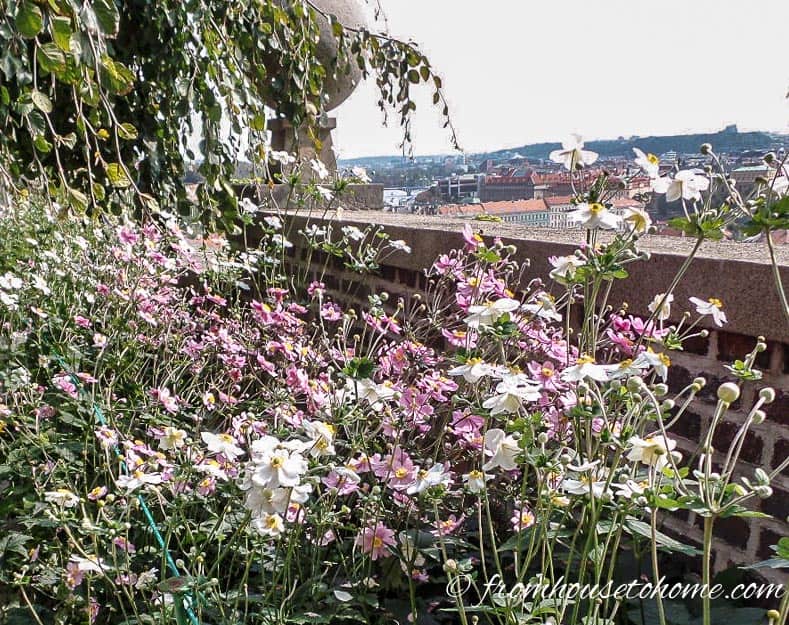
These delicate looking flowers are tough and very showy in the late summer. When the other perennials are passed their prime, the Japanese anemone will help make the transition into fall by beautifully brightening the blah spaces in your garden.
Our Favorite Fall Anemone Varieties
[columns] [span6]
[/span6][span6]
Zones: 5 – 8
Anemone ‘Leather and Lace’* has pale pink flowers on a compact plant that grows to 16″ tall and doesn’t require any staking. It blooms from late summer through the fall.
[/span6][/columns]
[columns] [span6]
[/span6][span6]
Zones: 4 – 8
Japanese Anemone hup ‘September Charm’ has beautiful pink flowers with bright yellow centers and stems that grow to be 3′ to 4′ tall. It blooms from late summer to mid fall.
[/span6][/columns]
[columns] [span6]
[/span6][span6]
Zones: 5 – 8
Anemone ‘Fantasy Pocahontas’* has double flowers that are bubblegum pink with yellow centers. They bloom for months from mid summer to mid fall on stems that are 18″ tall.
[/span6][/columns]
[columns] [span6]
[/span6][span6]
Zones: 6 – 8
Anemone ‘Wild Swan’* starts out with light purple buds that open into white flowers with purple backs. Gorgeous! They grow to be 18″ tall and bloom all summer and fall.
[/span6][/columns]
[columns] [span6]
[/span6][span6]
Zones: 4 – 8
Japanese Anemone hup ‘Honorine Jobert’* produces beautiful white blooms with yellow stamens around chartreuse centers. It blooms prolifically in the late summer and early fall on stems that are 3′ to 4′ tall.
[/span6][/columns]
I hope I have inspired you to find a place to enjoy its regal loveliness.
Pin It So You Don't Forget It!
 [/span6][span6]
[/span6][span6]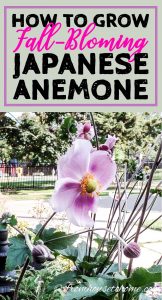
[/span6][/columns]
Have comments or questions on Japanese Anemones? Tell us in the section below.
This post was originally published on April 10, 2018 but was updated with new content on September 13, 2023.

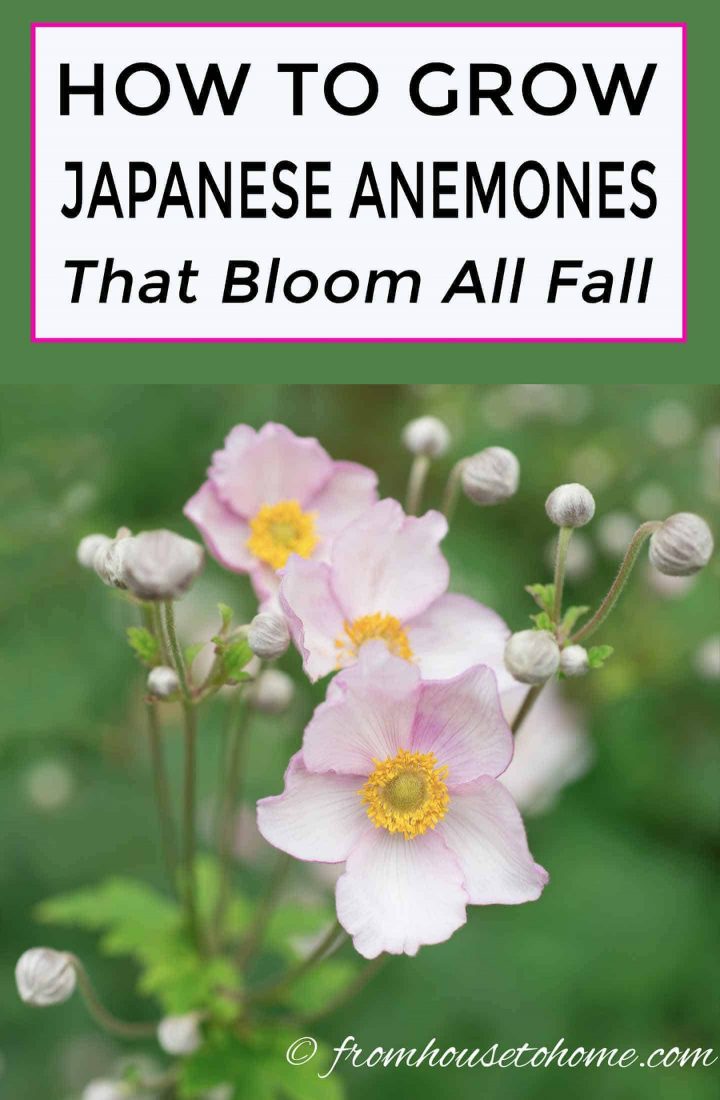
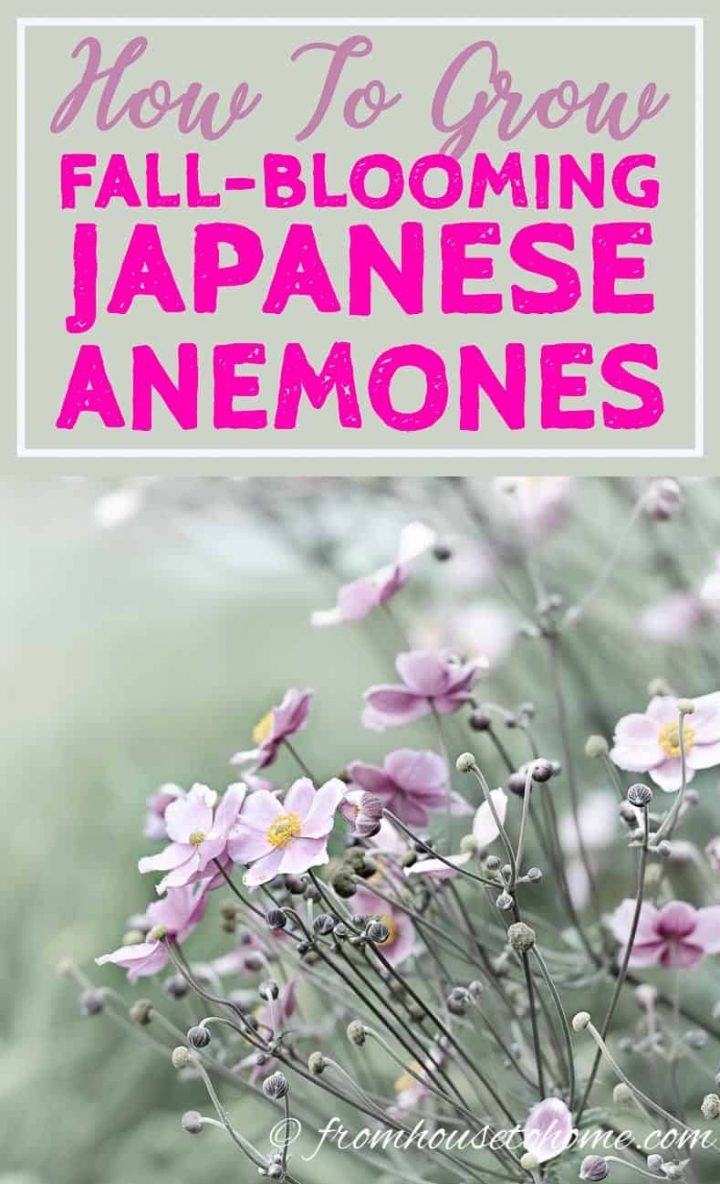
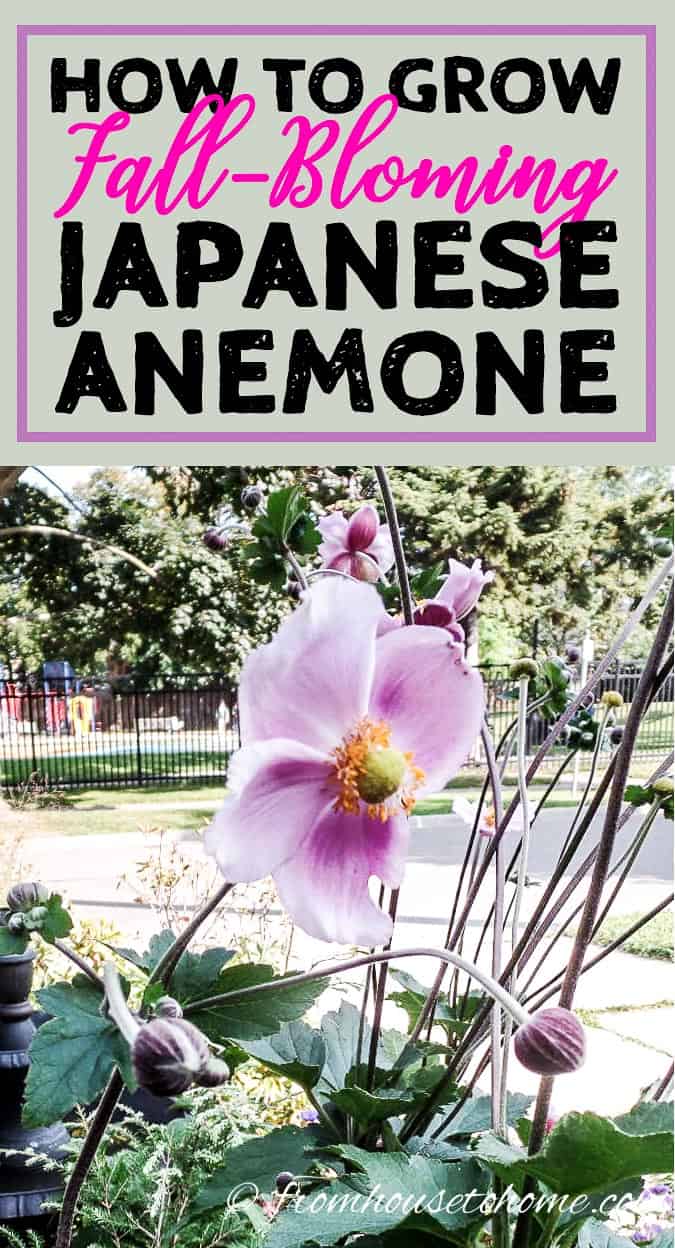
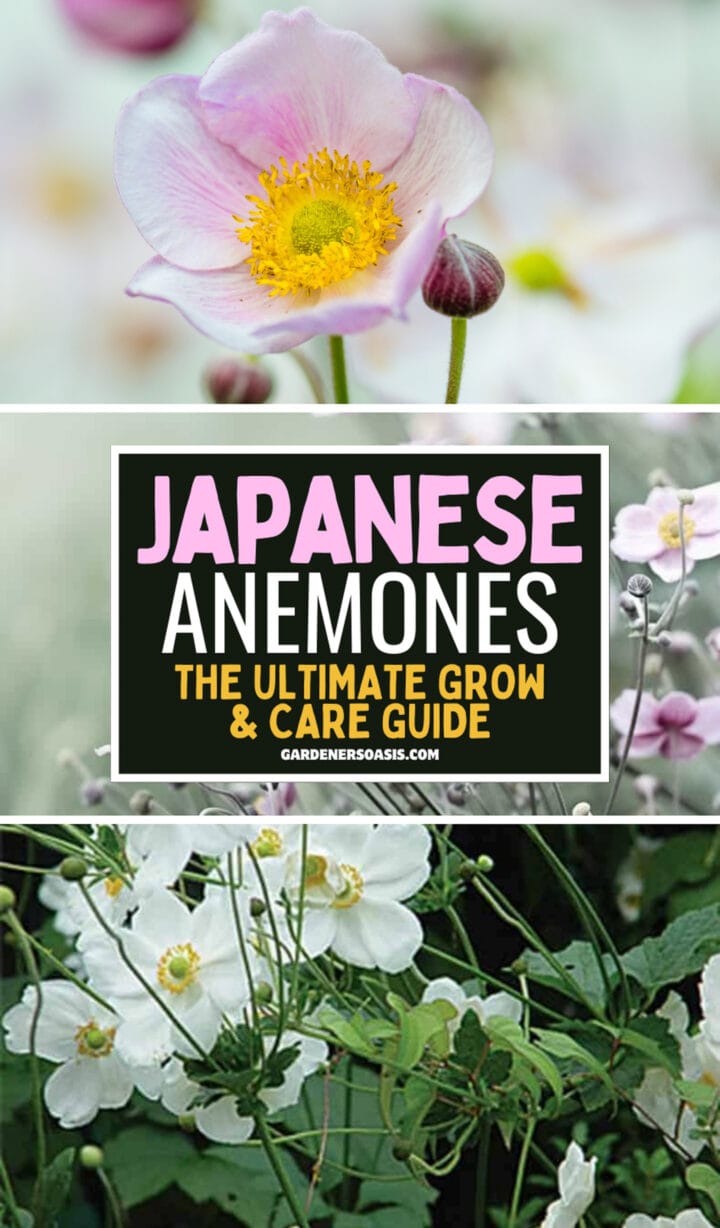
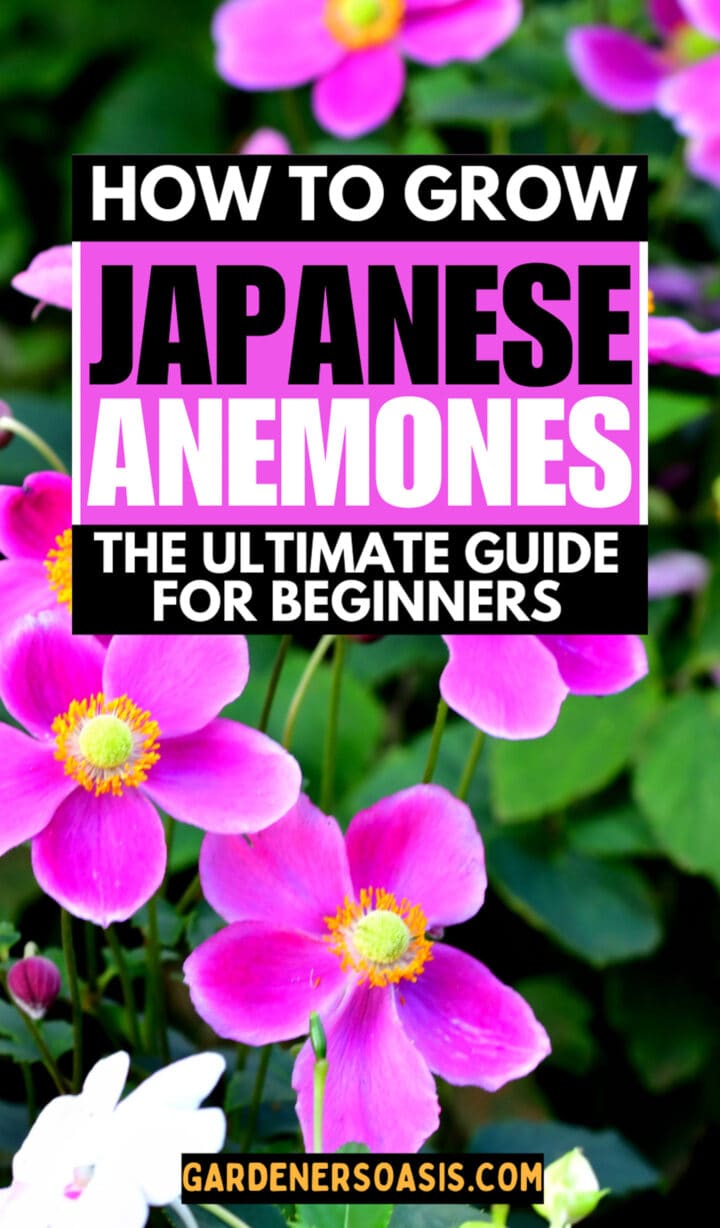
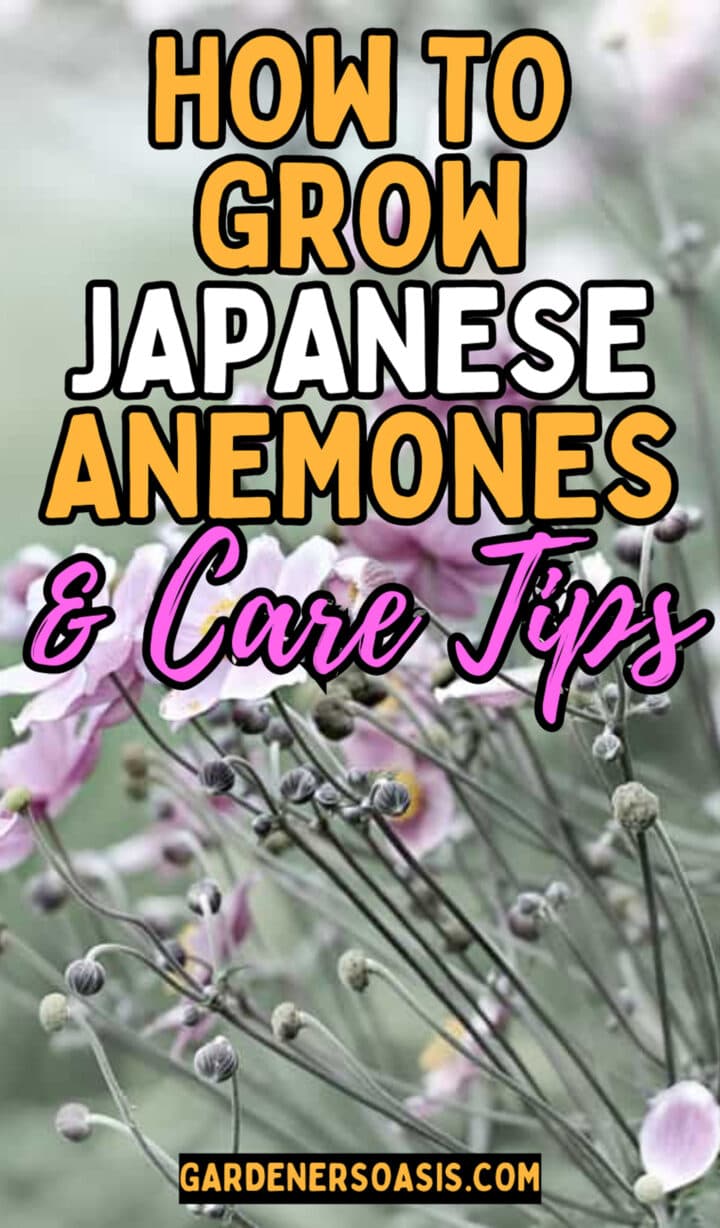
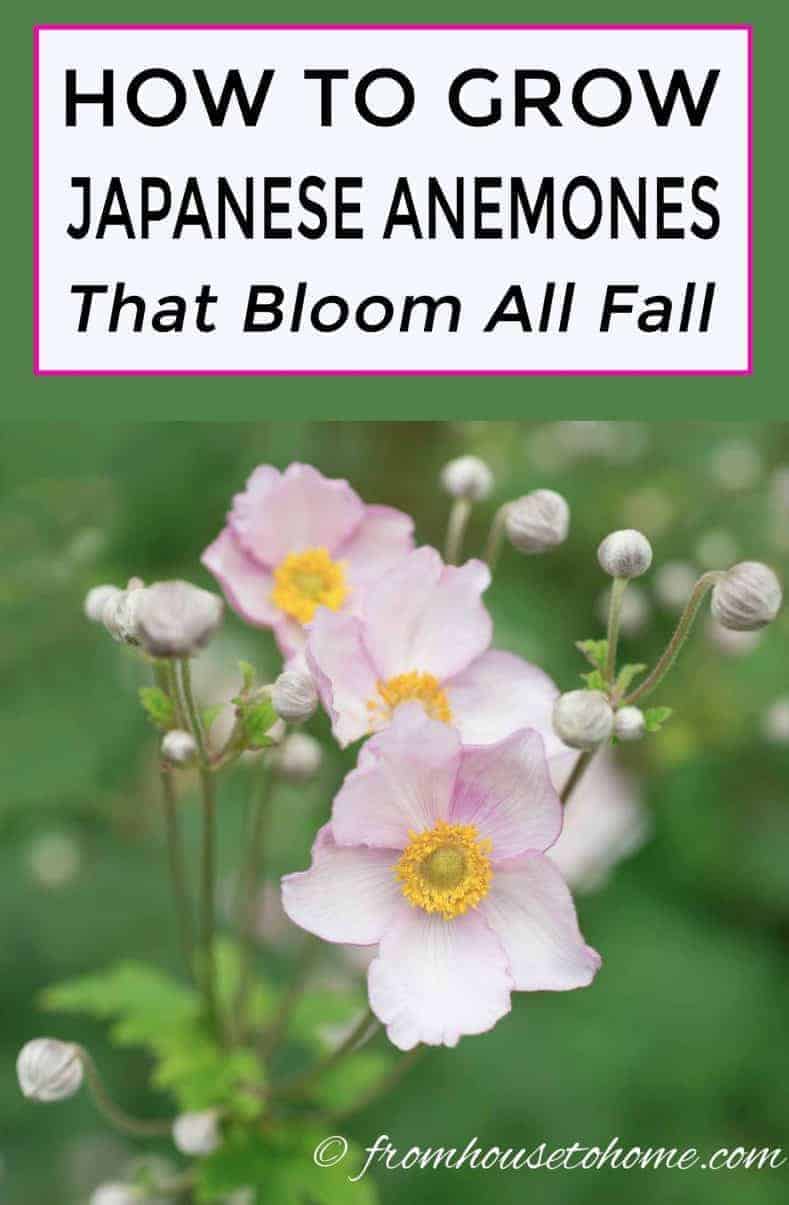
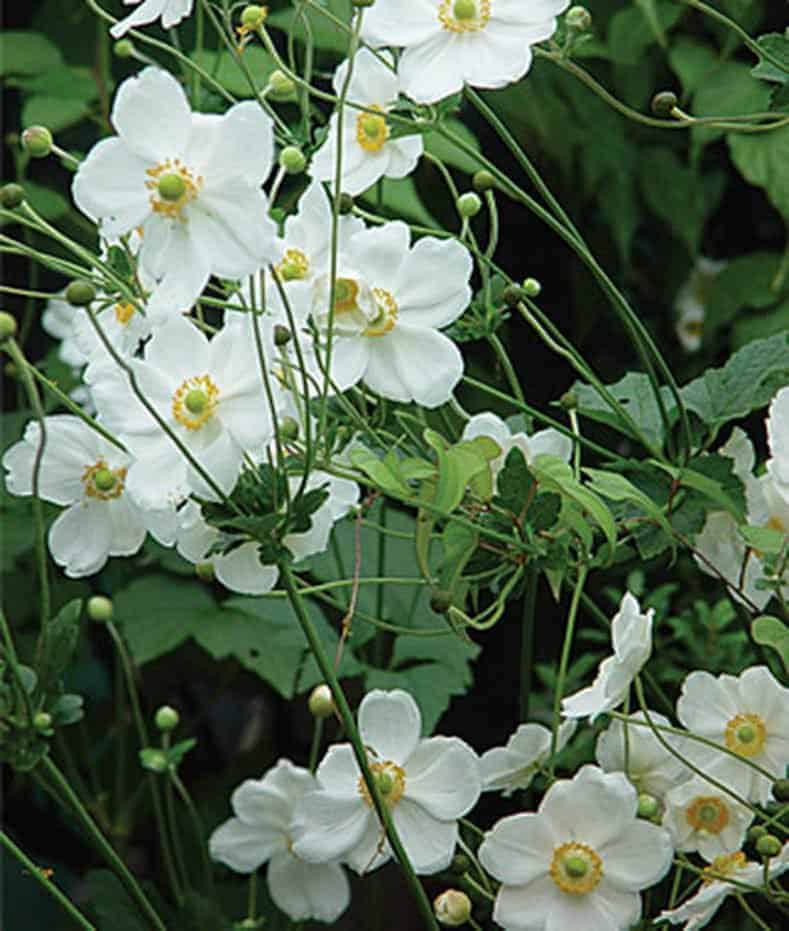
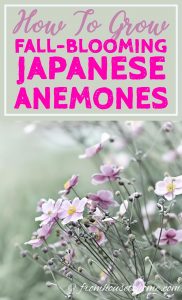
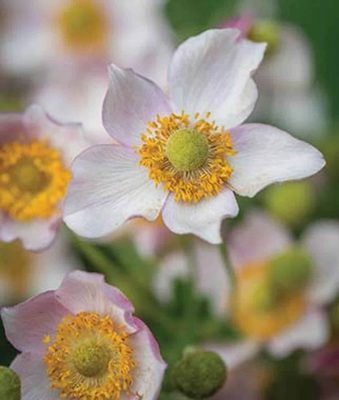
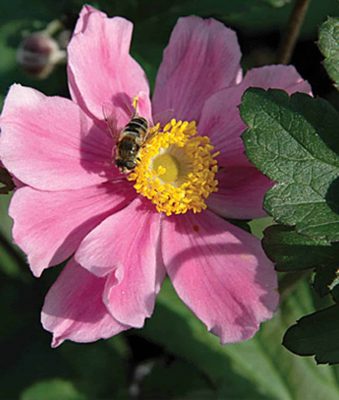
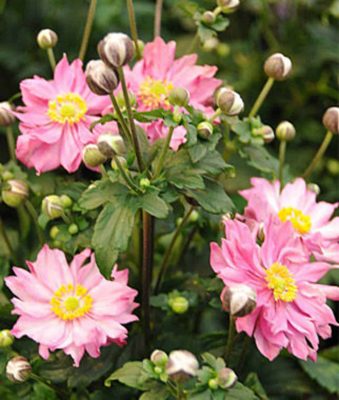
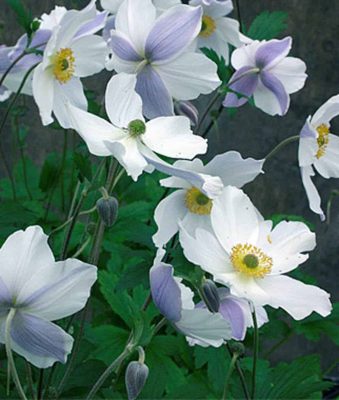
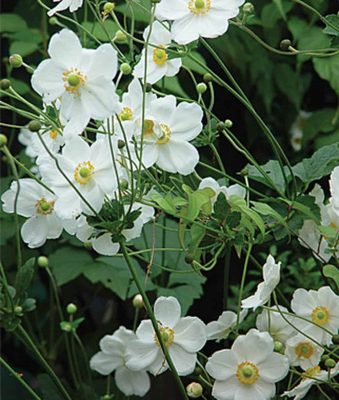
I would never advise anyone to plant Japanese anemones. They are the most awful thugs. They spread through all other plants. They even go under concrete and come up the other side I have spent at least two years pouring on weed killers and digging up the roots all to no avail. Pretty flowers yes, but I despair of ever getting rid of these menaces. I agree with all the other invasive menaces you mention.I have most of them and they are on my get rid of them list
Hi Nan…I have heard that some people have trouble with them. They haven’t caused any issues in my garden (I think some varieties are less invasive than others), but I will add a note so people know to check with gardeners in their area before growing them just in case.
Where can I get these anemones
Hello Michel, I bought mine as plants at the local plant nursery. You can order on line at http://www.brecks.com/product/whirlwind-japanese-anemone, when they have them back in stock.
I have been trying to grow honourine jobert anemone from bare root
for the last 5 yrs. in various soils, in various places in my yard. I can’t
get them to grow! I even tried in pots with no luck!
Is there a trick to growing these from bare root?
Hi Patricia…I haven’t tried growing Japanese anemones from bare root, but generally speaking, I grow bare root plants in a container using potting soil for the first few months. Then plant them in the ground after they are established. I find I have a much better survival rate that way. So maybe that would work.
Where can one buy these. They are beautiful.
I live in Somerset west.
I would also like double zinnia seeds…they are nowhere to be found
Sorry, Dilys…I am not familiar with sources in your area. You should be able to find Japanese Anemone seeds as well. They sell them on Amazon.com here (not sure if you can order through them where you are).